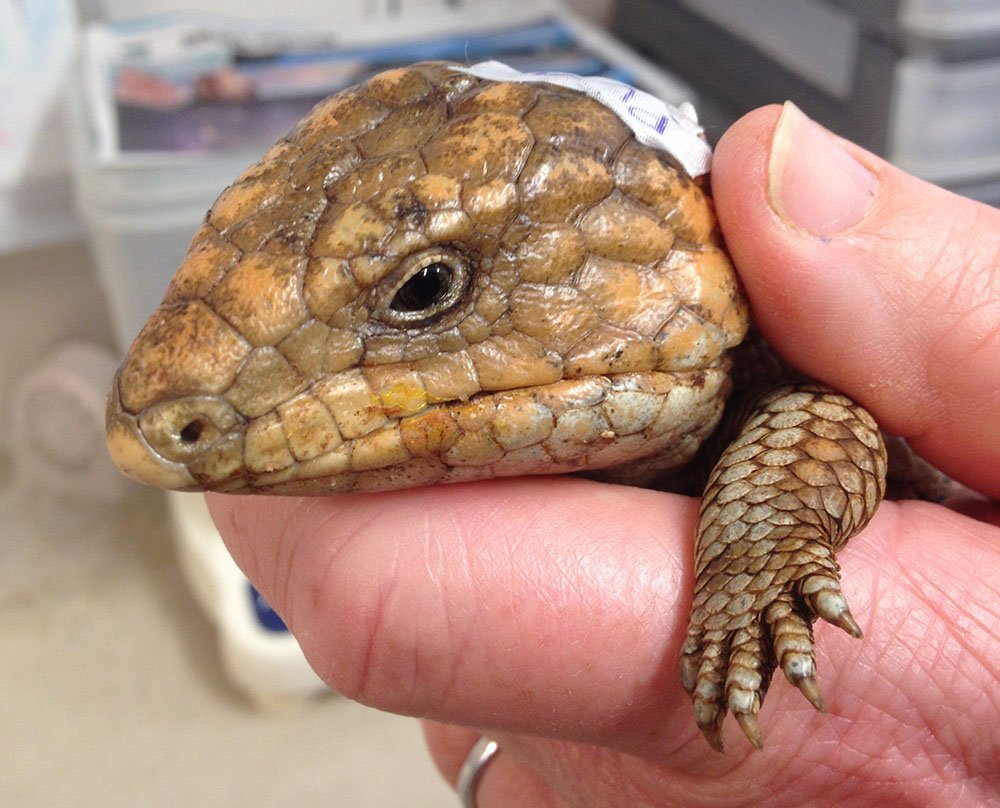World’s first lizard nidovirus found in Aussie bobtails

A NEW TYPE of virus has been found in an iconic Australian lizard – the first of its kind to be found in any lizard in the world.
Unofficially named ‘Shingleback nidovirus 1,’ the virus was found to be associated with a debilitating disease in Australian bobtails. Colloquially known as ‘bobtail flu’, it was causing sneezing, drowsiness, discharge from the eyes and mouth and loss of body condition.
The cause of the disease has remained a mystery to carers and researchers for 20 years, but next-generation sequencing technology allowed Murdoch University researchers to make the discovery.
“Over time, I think there have been some other little studies to try and find out the cause, but never with any success,” explained Dr Mark O’Dea, a veterinary virologist at Muroch University and co-author on a paper describing the findings.

Researchers in Western Australia have identified a new flu-like disease in Australian bobtail lizards. (Image: Dr Bethany Jackson)
“In the past, people had to have an idea of what it was and look specifically for it, whereas we now have the technology to look for any virus in general,” he said.
“It’s pretty significant – we’ve found it, and for us now, it’s really the beginning.”
During six to eight months of sampling, 83 bobtails admitted to Perth’s Kanyana Wildlife Rehabilitation Centre were tested, of which 49 were sick, 33 were healthy and one individual could not be placed in either category.
Fellow researcher Dr Bethany Jackson said they were lucky to be able to work with Kanyana – which has kept records of past cases and has an 85 per cent success rate in treating sick individuals through supportive care and rehydration fluids.
“It’s like when we get a cold, we say we’ve got the flu, but it’s not actually influenza,” she said.
Bethany added that the discovery – published in the journal PLOS ONE last week – will prompt to further research into the virus, looking at mortality rates in the wild, how it is transmitted and what makes individuals susceptible to the virus.
“And that’s really important because they are a very social species – if males interact more by fighting, they may be more important to look at,” she said.
Another avenue of research will be whether the virus is limited to bobtails.
“Who’s to say this isn’t affecting other reptiles? It really opens a lot of doors in that respect,” Bethany said.
Yet another threat for iconic species
While bobtails may seem common because they are out and about during the day in the Sun, due to their long-lived nature the populations could be declining without it being obvious.
“A species that is regularly hit by cars, bitten by dogs and now this – how many threats can you withstand before the population declines?” said Bethany.
While the disease has debilitating effects on bobtails, Mark added that he is confident there is no risk of the virus spreading to mammals – including humans.
And with a high success rate with treatment, if people find an unwell bobtail, Mark said to do the best they can to safely catch it, put it in a cardboard box to keep it dark and get it to a local wildlife care centre.
READ MORE:
- Wombats suffering and dying from treatable disease
- New weapon against virus killing Australia’s endangered parrots
- Australian lizard the world’s smallest monitor
- The thorny devil lizard’s drinking habits

